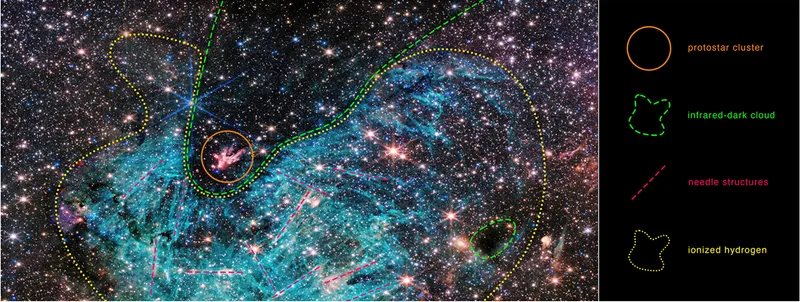The latest image from the James Webb Space Telescope shows the central region of our own Milky Way galaxy, and reveals new details that have never previously been observed.
The new Webb Milky Way image depicts the Sagittarius C region, which lies just 300 lightyears from Sagittarius A*, our galaxy’s central supermassive black hole.
In the Webb Milky Way image can be seen over 500,000 stars, including a cluster of protostars – the V-shaped pink blob lying below-right of the blue diffraction spikes on the left of the image – and a couple of infrared dark clouds.
See the latest James Webb Space Telescope images

One such cloud can be seen surrounding the protostar cluster, while a smaller one appears in the lower half of the image, about two-thirds of the way across.
These are regions where dense clouds of gas and dust block out the light coming from the stars behind them.
What scientists have been most surprised by, though, is the amount of ionized hydrogen found in the region.
This shows up cyan (pale blue) in the image, with the ionized region covering an area about 25 lightyears across.
Within this area can also be spotted needle-like structures, whose genesis is yet to be properly understood.

"There's never been any infrared data on this region with the level of resolution and sensitivity we get with Webb, so we are seeing lots of features here for the first time," says Samuel Crowe from the University of Virginia, who led the observation team.
"Webb reveals an incredible amount of detail, allowing us to study star formation in this sort of environment in a way that wasn’t possible previously."
Crowe’s colleague Rubén Fedriani, from Spain’s Instituto Astrofísica de Andalucía, adds: "The galactic centre is a crowded, tumultuous place.
"There are turbulent, magnetised gas clouds that are forming stars, which then impact the surrounding gas with their outflowing winds, jets, and radiation. Webb has provided us with a ton of data on this extreme environment, and we are just starting to dig into it."

